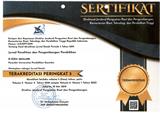Developing Digital Game E-Calf As Self-Directed Learning Media For The First Grade Students Of Elementary School At SD Lab Undiksha Singaraja
DOI:
https://doi.org/10.23887/jppp.v2i3.16287Abstract
This research aimed to develop digital game e-CALF as self-directed learning media. The subject of this research was 23 students (30%) of first grade students at SD Lab UNDIKSHA Singaraja. The design of this research adapted to research and development ADDIE model proposed by Romiszowski (1996). Since, it was still a prototype product, there were only three procedures used namely Analyze, Design and Development. In collecting the data, some instruments were used to conduct this research. There were observation sheet, teacher’s interview guide, expert judgment rubrics, students’ questionnaire, and syllabus analysis. In the end of this research, there was a prototype product named e-CALF as self-directed learning media in form of application. The result of this research is digital game that is developed based on syllabus analysis and the students’ needs. It is developed based on four topics namely; family, things in the classroom, fruits, and vegetables. Each topic consists of six sheets; there are two sheets about the vocabulary, two sheets about filling the blank text, and two sheets about comprehension text with the questions. Based on the result of expert judgment rubrics, it is found that e-CALF is categorized as excellent media. Thus, this prototype product is proper to use for learning English for first grade students
Downloads
Published
How to Cite
Issue
Section
License
Authors who publish with the Jurnal Penelitian dan Pengembangan Pendidikan agree to the following terms:
- Authors retain copyright and grant the journal the right of first publication with the work simultaneously licensed under a Creative Commons Attribution License (CC BY-SA 4.0) that allows others to share the work with an acknowledgment of the work's authorship and initial publication in this journal.
- Authors are able to enter into separate, additional contractual arrangements for the non-exclusive distribution of the journal's published version of the work (e.g., post it to an institutional repository or publish it in a book), with an acknowledgment of its initial publication in this journal.
- Authors are permitted and encouraged to post their work online (e.g., in institutional repositories or on their website) prior to and during the submission process, as it can lead to productive exchanges, as well as earlier and greater citation of published work. (See The Effect of Open Access)







